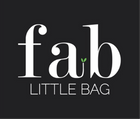
The Hidden History of Tampons: Who Invented Them & Why It Matters
We use them. We rely on them. But how often do we stop and ask: where did tampons come from—and why does their history matter?
In a world still shrouded in period stigma, understanding the origins of tampon design, innovation, and cultural acceptance sheds light on the journey toward period equality—and the work still to be done.
So, let’s dive into the hidden history of tampons, the minds behind them, and what it means for menstrual care today.
Ancient Alternatives: Period Care Before Tampons
Before the modern tampon, people had to get creative. And they did.
-
Ancient Egyptians used softened papyrus
-
Greeks reportedly used lint wrapped around bits of wood
-
Romans experimented with wool
-
In Japan, paper was folded and inserted, while Indonesia saw the use of natural sponges
Period care was always needed—but access, comfort, and safety? That came much later.
The First “Modern” Tampon: Earle Haas & the 1930s Breakthrough
The modern tampon, as we know it today, was patented in 1931 by American physician Dr. Earle Haas. His version included a compressed cotton plug with a cardboard applicator, which he developed after hearing how women were dissatisfied with bulky sanitary pads.
Just two years later, Gertrude Tendrich, a Colorado businesswoman, bought the patent and founded Tampax—creating one of the first commercial tampon brands in the U.S.
It was a breakthrough in personal freedom:
💡 Tampons were discreet
💡 They allowed for more movement and activity
💡 And they gave women options
But even then, the topic was taboo—and remains so in many circles today.
Marketing, Stigma & the Struggle for Acceptance
Despite the innovation, tampon adoption was slow. Marketing was subtle (to say the least), and early campaigns were almost entirely focused on sanitisation and silence. No mention of periods. Definitely no mention of women’s lives or autonomy.
In fact, until the late 1980s, most commercials for menstrual products couldn’t even show red liquid—only blue.
And while tampons helped millions, they also came with questions:
-
Concerns about Toxic Shock Syndrome
-
Debate over applicator vs non-applicator
-
Lack of innovation in disposal options (sound familiar?)
Why This History Still Matters Today
Tampons were a game-changing invention—but period care is still evolving. We’re now questioning not only what we useduring our periods, but how we manage them more sustainably and respectfully.
That’s where FabLittleBag steps in.
Because while tampons may have modernised how we manage periods, disposal is still stuck in the past. Flushing tampons is common—but it’s damaging:
-
Clogs plumbing
-
Pollutes oceans
-
Leaves plastic waste behind for hundreds of years
Modern Menstrual Care Needs Modern Disposal
At FabLittleBag, we’re proud to support the next chapter in period care. Our mission? Make disposal easy, hygienic, and sustainable—so tampons can be used without harming the planet.
FabLittleBag disposal bags:
✔ Are made from sustainable materials
✔ Seal securely for odour-free, leak-free binning
✔ Open with one hand (mid-squat, we’ve got you!)
✔ Empower people to dispose confidently—wherever they are
From Then to Now: Keep the Progress Going
The tampon’s history is a story of quiet revolution. It’s about innovation led by necessity, courage, and care. And it reminds us that periods deserve proper attention, innovation and conversation—in every era.
We’ve come a long way. But we’re not done yet.
Let’s Continue the Evolution
Want to manage your period with confidence—and care for the planet too?
Start with better disposal.
